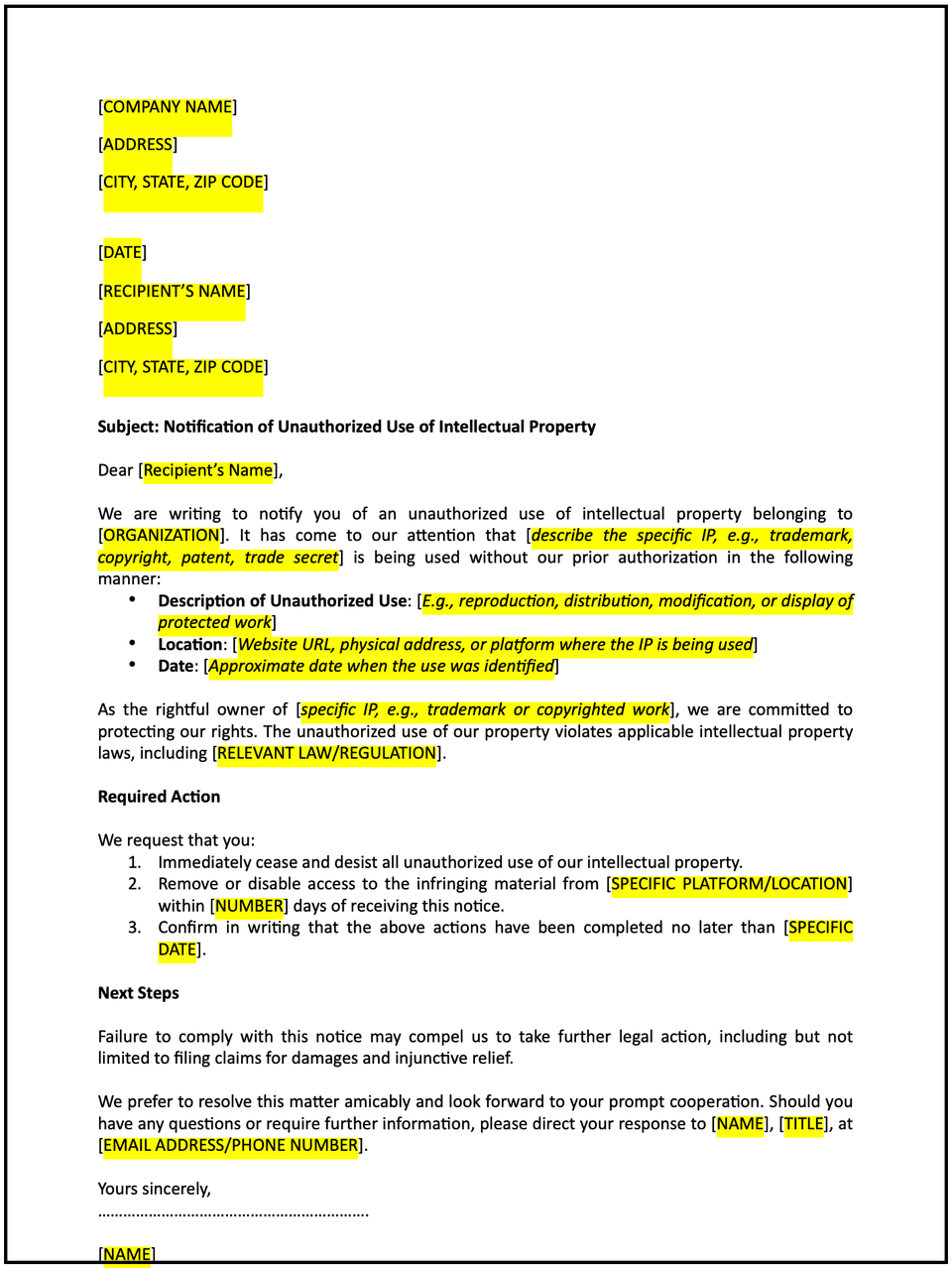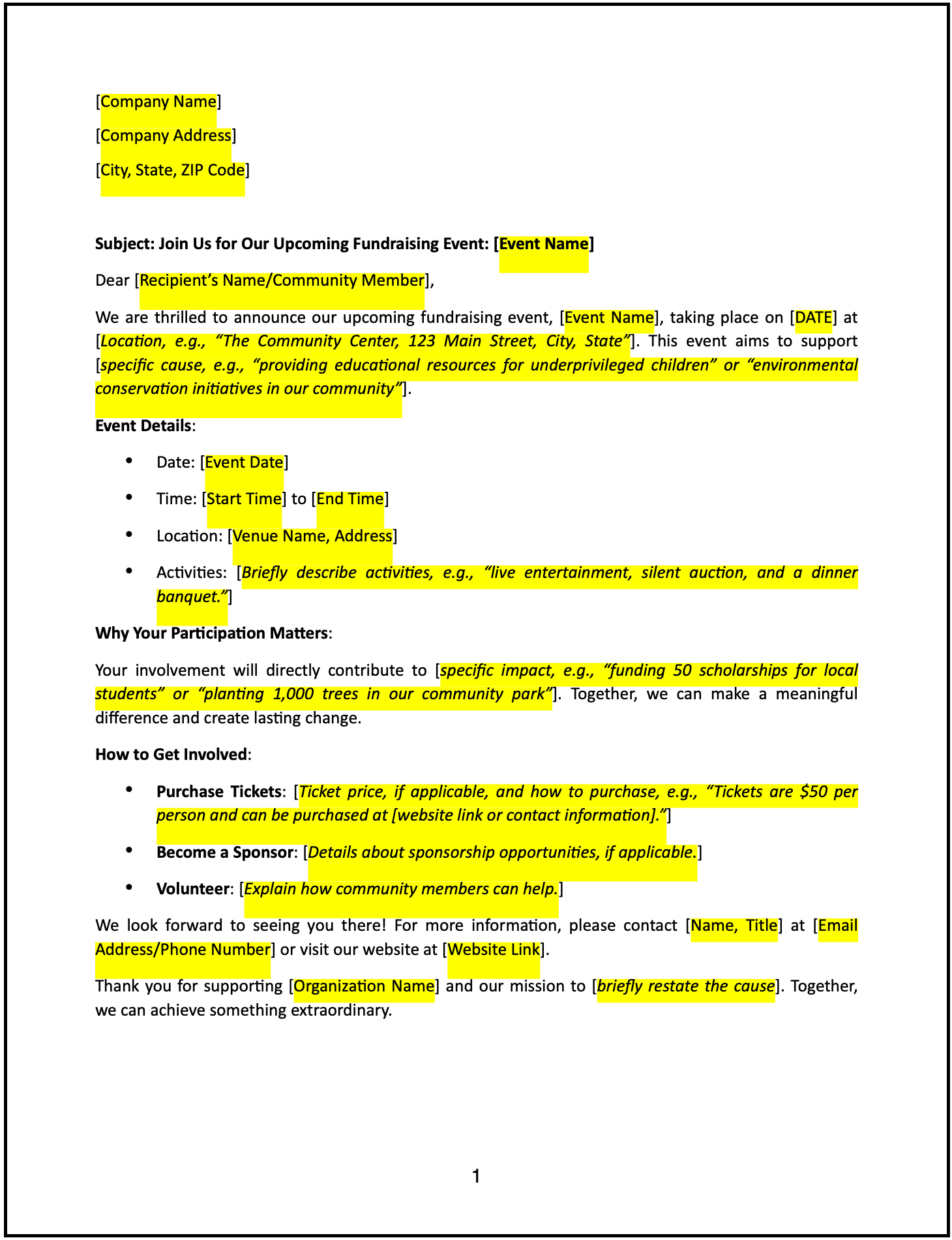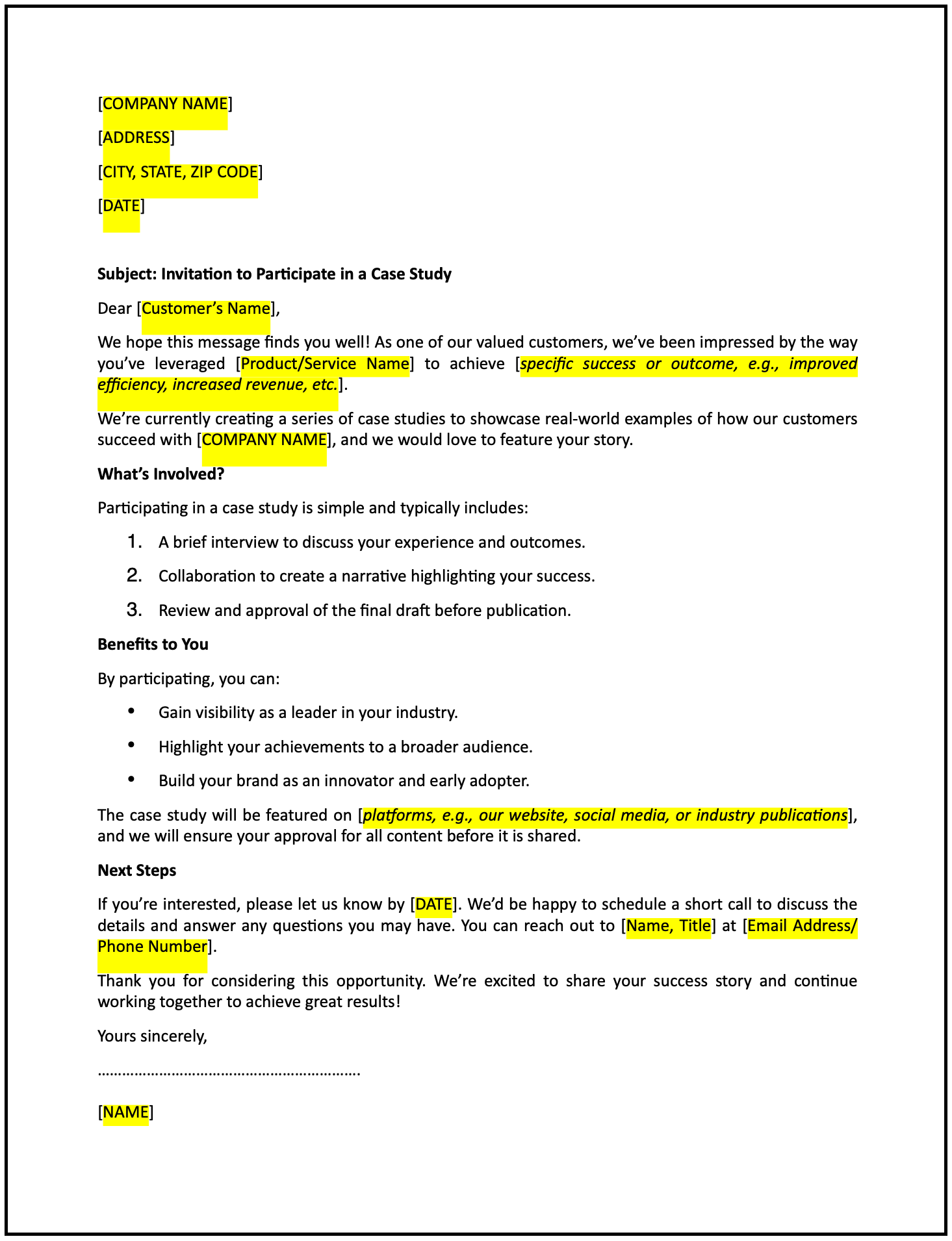Unauthorized use of intellectual property notification letter: Free template

Unauthorized use of intellectual property notification letter
An unauthorized use of intellectual property notification letter is a formal communication used to inform a third party that they are using protected IP without permission. It is often the first step in addressing infringement or misuse of intellectual assets such as trademarks, copyrights, patents, or trade secrets.
This letter outlines the nature of the intellectual property involved, provides evidence of unauthorized use, and formally requests that the recipient cease all infringing activity. It also highlights potential consequences if the issue is not resolved and may offer a path forward, such as licensing discussions or written assurances of compliance.
Sending this letter demonstrates your intent to protect your IP rights while giving the third party a chance to resolve the matter amicably before legal enforcement becomes necessary.
How to use this unauthorized use of intellectual property notification letter
- Open with an introduction: Address the recipient professionally and clearly state the purpose of the letter. Mention that the letter serves as formal notice regarding unauthorized use of intellectual property.
- Identify the IP: Describe the specific intellectual property being referenced. This may include trademarks, copyrighted materials, patented inventions, or confidential trade secrets. Include registration numbers or other identifying details where applicable.
- Describe the unauthorized use: Explain how the third party is using the IP without consent. Provide concrete examples such as product listings, packaging, website content, advertisements, or reproduced materials. Attach any available supporting evidence.
- Cite ownership and legal basis: Reaffirm your ownership or legal rights to the intellectual property. If relevant, reference registration details or applicable IP laws (e.g., U.S. Copyright Act, Lanham Act, or Patent Act).
- Demand cessation of use: Clearly request that the recipient immediately stop using the intellectual property without authorization. Specify that all infringing content should be removed from public view, digital platforms, printed materials, or product packaging.
- Offer resolution: Where appropriate, propose a constructive way forward—such as entering into a licensing agreement, signing a written assurance, or confirming cessation of use. This helps keep the tone solution-focused while maintaining your rights.
- Warn of consequences: State that failure to comply may result in legal action, including claims for damages, injunctive relief, or other remedies under IP law. This provides a clear incentive for resolution without being overly confrontational.
- Maintain a professional tone: Keep the language respectful, factual, and businesslike. A professional tone strengthens the credibility and effectiveness of your message.
- Provide contact information: Include your full name, role, organization (if applicable), email address, and phone number so the recipient can easily respond or request clarification.
Benefits of using an unauthorized use of intellectual property notification letter
- Promotes clarity: Provides a clear explanation of your IP rights and how they are being violated.
- Reflects professionalism: A structured, well-written letter shows that you are handling the matter responsibly.
- Encourages early resolution: Gives the third party a fair opportunity to correct the issue before it escalates.
- Builds legal credibility: Reinforces your position and demonstrates proactive enforcement of your IP rights.
- Supports enforcement action: Serves as written evidence of your efforts to resolve the matter before legal action.
Tips for writing an effective unauthorized use of intellectual property notification letter
- Be specific: Identify the IP in detail and clearly describe how it is being used without authorization.
- Use professional language: Keep the tone respectful but firm, focusing on resolving the issue constructively.
- Provide legal context: Reference the laws or registrations that support your claim to ownership or protection.
- Highlight corrective actions: Clearly state what the recipient must do to resolve the situation.
- Include actionable steps: Request written confirmation, propose next steps, or offer to discuss resolution options.
- Keep it focused: Cover all key points without including unnecessary details or emotional language.
Frequently asked questions (FAQs)
Q: What details should I include in this letter?
A: Include a clear description of the intellectual property, evidence of unauthorized use, a request for cessation, and any applicable legal context or consequences.
Q: Should I personalize the letter?
A: Yes, addressing the recipient by name and referencing specific instances of use demonstrates attention to detail and professionalism.
Q: Who typically sends this letter?
A: The letter is usually sent by the IP owner, their legal counsel, or an authorized representative acting on their behalf.
Q: How formal should this letter be?
A: The tone should be professional and assertive, with a focus on encouraging compliance and preserving your rights.
Q: When should this letter be sent?
A: As soon as the unauthorized use is discovered, to limit further misuse and protect your legal position.
Q: Can this letter include a licensing proposal?
A: Yes, offering a licensing agreement can be a constructive way to resolve the issue while maintaining control over your IP.
Q: Is acknowledgment from the recipient required?
A: Yes, requesting written acknowledgment ensures the recipient has received the notice and understands the request.
This article contains general legal information and does not contain legal advice. Cobrief is not a law firm or a substitute for an attorney or law firm. The law is complex and changes often. For legal advice, please ask a lawyer.


